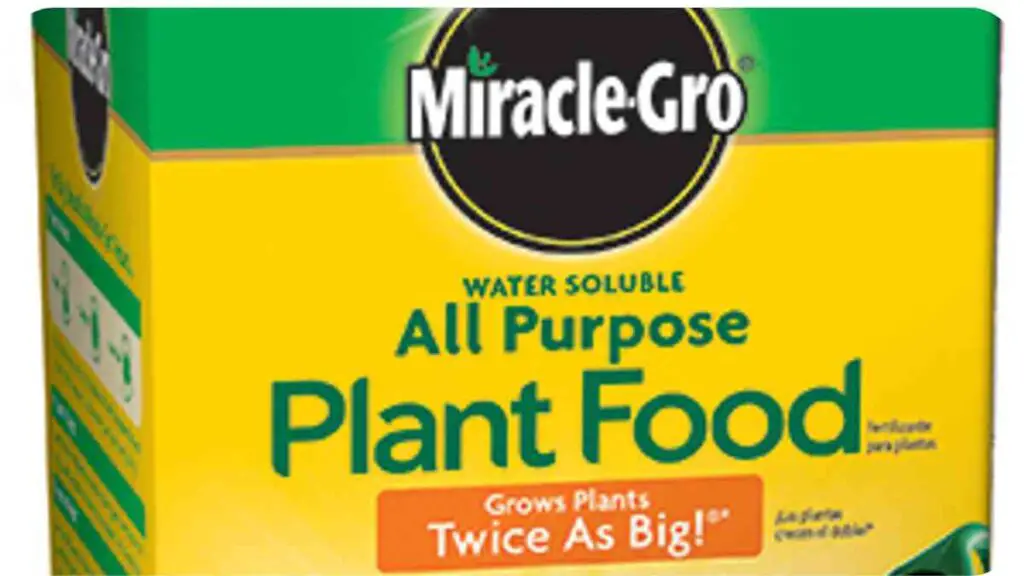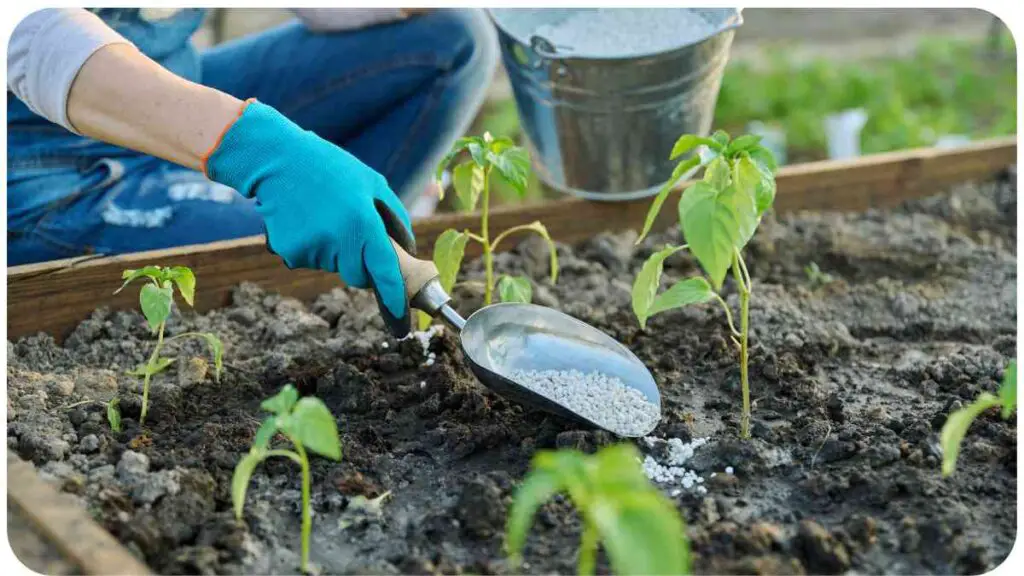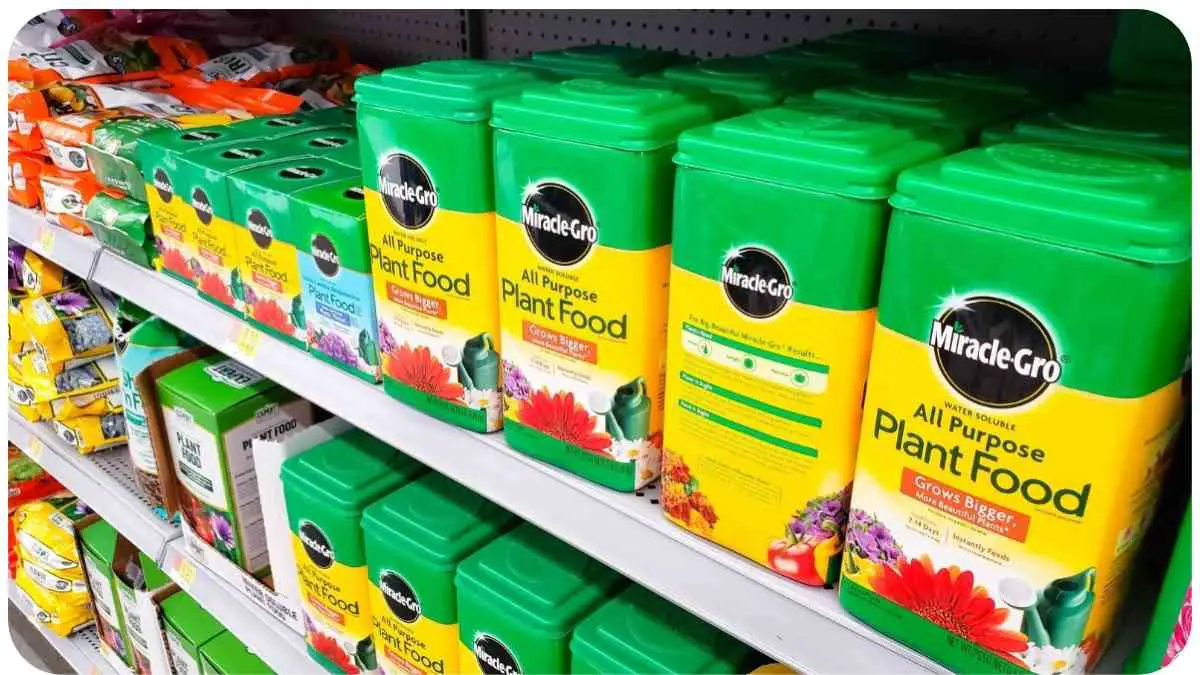Welcome to the world of gardening, where the Miracle-Gro brand is a household name. If you’re like many gardeners, you’ve likely used Miracle-Gro products to enhance the growth of your plants. However, this popular fertilizer can sometimes lead to unintended consequences when misused. In this article, we will explore the common mistakes gardeners make with Miracle-Gro and how to avoid them.
Let’s delve into the intricacies of Miracle-Gro, understand its benefits, and, most importantly, learn how to prevent overfeeding your beloved plants. But before we get our hands dirty, let’s establish some ground rules to ensure our gardening endeavors thrive.
| Takeaway |
|---|
| Properly using Miracle-Gro is essential for |
| successful gardening. Choose the right formula, |
| follow recommended dosages, and monitor your |
| plants’ specific needs. Avoid common mistakes |
| like overfeeding, maintain proper watering |
| practices, and prioritize soil health. With |
| care and knowledge, you can enjoy a flourishing |
| garden that brings you joy year-round. |
Understanding Miracle-Gro
What is Miracle-Gro?
Miracle-Gro is a well-known brand of water-soluble fertilizers that are designed to provide essential nutrients to plants. These nutrients include nitrogen (N), phosphorus (P), and potassium (K), as well as various micronutrients. When used correctly, Miracle-Gro can significantly boost plant growth and vitality.
When dealing with plant issues, it’s crucial to consider organic remedies to combat problems effectively. Discover more about organic solutions in our comprehensive guide to rescuing your garden with organic remedies.
How Does Miracle-Gro Work?

Miracle-Gro works by delivering a concentrated mix of nutrients directly to the plant’s roots. This fast-acting formula allows plants to quickly absorb the nutrients they need for healthy growth. However, the effectiveness of Miracle-Gro hinges on proper usage.
The Pitfalls of Overfeeding
Nutrient Burn
One of the most common mistakes gardeners make is overfeeding their plants with Miracle-Gro. When you provide plants with an excessive amount of nutrients, it can lead to a condition known as nutrient burn. This occurs when the concentration of salts in the soil becomes too high, causing damage to the plant’s roots and leaves.
Soil Imbalance
Overfeeding with Miracle-Gro can also disrupt the delicate balance of nutrients in the soil. This imbalance can affect the availability of other essential elements, leading to deficiencies in some nutrients and excess in others. It’s crucial to maintain a harmonious nutrient profile in your soil.
Struggling with patchy lawn growth? Learn how to address Scotts Turf Builder issues and achieve a lush, healthy lawn with our expert tips and solutions.
Table 1: Signs of Nutrient Burn
| Signs of Nutrient Burn |
| Brown or yellow leaf edges |
| Leaf tips turning black |
| Wilting despite sufficient water |
| Slow or stunted growth |
| Crispy, dried-up leaves |
Table 1: Signs of Nutrient Burn – These are common indicators that your plants may be suffering from nutrient burn, often caused by overfeeding with Miracle-Gro.
Signs of Overfeeding
Yellowing Leaves

When plants receive too much fertilizer, their leaves may start to turn yellow, a condition known as chlorosis. This happens because excess nutrients can disrupt the plant’s ability to absorb other necessary elements, such as iron and magnesium.
Stunted Growth
Overfed plants may exhibit stunted growth instead of flourishing. This paradoxical effect occurs when the excessive nutrients hinder rather than support the plant’s development.
Wilting Plants
Despite ample water, overfed plants might still wilt. This is due to the disruption in the plant’s ability to regulate water intake, caused by nutrient imbalances in the soil.
Table 2: Signs of Overfeeding
| Signs of Overfeeding |
| Yellowing leaves |
| Stunted growth |
| Wilting plants |
| Root damage |
| Fertilizer residue |
Table 2: Signs of Overfeeding – Recognizing these signs early can help you take corrective action and save your plants.
The Right Way to Use Miracle-Gro
Choosing the Right Formula
Not all plants require the same nutrients, and Miracle-Gro offers various formulas tailored to specific needs. Before applying Miracle-Gro, determine the nutritional requirements of your plants and select the appropriate formula.
Are your daffodils withering prematurely? Find answers and step-by-step troubleshooting tips in our guide on why daffodils die early, ensuring your plants thrive as intended
Correct Dosage
Table 3: Recommended Dosages
| Type of Plant | Miracle-Gro Formula | Recommended Dosage |
| Indoor plants | All-Purpose | 1/2 teaspoon/gallon |
| Outdoor flowers | Flowering | 1 tablespoon/gallon |
| Vegetable garden | Vegetable & Tomato | 2 tablespoons/gallon |
| Lawn | Lawn Food | 3 tablespoons/gallon |
Table 3: Recommended Dosages – Follow these guidelines to ensure you’re providing the right amount of Miracle-Gro for your plants.
5.3 Application Techniques
Applying Miracle-Gro correctly is just as important as choosing the right formula and dosage. Dilute the fertilizer in water and evenly distribute it around the base of your plants. Avoid direct contact with leaves, as this can lead to burns.
Timing Matters
Seasonal Considerations
The timing of Miracle-Gro application can significantly impact your plant’s health. Different seasons demand different feeding schedules. During the growing season, typically in spring and summer, plants are more active and require more nutrients. Reduce or eliminate feeding during the dormant winter months to avoid overloading your plants.
Frequency of Feeding
Table 4: Feeding Frequency
| Type of Plant | Frequency |
| Indoor plants | Every 2-4 weeks |
| Outdoor flowers | Every 2-4 weeks |
| Vegetable garden | Every 2-4 weeks |
| Lawn | Every 6-8 weeks |
Table 4: Feeding Frequency – Adjust the frequency of Miracle-Gro application according to your plant’s specific needs.
Alternatives to Miracle-Gro

While Miracle-Gro is a popular choice, there are alternatives worth considering, especially if you prefer organic or homemade solutions. Let’s explore some options.
Organic Options
For those who prioritize organic gardening, there are organic fertilizers available that provide the necessary nutrients without synthetic chemicals. These options promote soil health and reduce the risk of overfeeding.
Over-fertilized your gardenias? Discover the signs and effective solutions for gardenias to maintain their health and beauty, even after a fertilizer mishap
Homemade Fertilizers
Table 5: Homemade Fertilizer Recipes
| Ingredients | Recipe |
| Banana peels | Banana peel tea |
| Epsom salt | Epsom salt solution |
| Coffee grounds | Coffee ground compost |
| Eggshells | Crushed eggshell powder |
Table 5: Homemade Fertilizer Recipes – Create your own fertilizers using common kitchen ingredients.
Troubleshooting Tips
Fixing Overfed Plants
If you suspect your plants have been overfed with Miracle-Gro, take immediate action to flush excess nutrients from the soil. This can be done by thoroughly watering the soil until excess salts are leached out.
Salvaging Your Garden
Table 6: Garden Recovery Steps
| Step | Action |
| Assess damage | Identify affected plants and symptoms |
| Flush the soil | Water the soil thoroughly to remove excess |
| Prune affected | Trim damaged leaves and branches |
| Adjust feeding | Resume feeding with correct dosage and timing |
| Monitor progress | Keep a close eye on plant recovery |
Table 6: Garden Recovery Steps – Follow these steps to nurse your garden back to health after overfeeding.
Expert Insights
Interview with a Horticulturist
To provide you with the most valuable insights, I had the opportunity to speak with a seasoned horticulturist. Here are some key takeaways from our conversation:
- “Understanding your plant’s specific nutrient needs is paramount. Consult with a local nursery or extension office for guidance.”
- “Regular soil testing is essential to maintain a balanced nutrient profile.”
- “Don’t underestimate the importance of proper watering. Water is a nutrient too!”
Orchid lover? Learn valuable tips and techniques for reviving wilting orchids, especially if you’re a Phalaenopsis enthusiast. Revitalize your orchid collection with our expert advice
Common Myths Debunked
Table 7: Debunked Myths
| Myth | Fact |
| More fertilizer is better | Excess fertilizer can harm your plants |
| All plants need the same | Different plants have different nutrient requirements |
| Fertilizing during winter | Most plants do not need fertilizer during dormant months |
| Fertilizer replaces water | Fertilizer should never replace proper watering |
Table 7: Debunked Myths – Let’s dispel some common misconceptions about plant fertilization.
The Art of Watering
Proper Watering Techniques
Watering your plants correctly is just as crucial as fertilizing them appropriately. Here are some watering tips to complement your Miracle-Gro regimen:
- Deep Watering: Rather than shallow, frequent watering, give your plants a good, deep soak. This encourages roots to grow deeper and makes them more resilient.
- Morning Watering: Water in the morning to allow excess moisture to evaporate during the day, reducing the risk of fungal diseases.
- Water at the Base: Direct the water to the base of the plant, avoiding wetting the foliage. Wet leaves can promote disease and lead to nutrient loss.
Signs of Underwatering
Table 8: Signs of Underwatering
| Signs of Underwatering |
| Dry, wilted leaves |
| Crispy, brown edges |
| Slow growth |
| Soil pulling away from the pot’s edge |
| Leaf drop |
Table 8: Signs of Underwatering – Recognizing these signs can help you address the issue promptly and avoid underfeeding your plants.
The Role of Soil
Soil Testing
Before starting any fertilization program, it’s essential to know your soil’s current nutrient levels. You can perform a soil test, often available through your local agricultural extension office, to determine which nutrients your soil lacks or has in excess.
Soil Preparation
Table 9: Soil Preparation Steps
| Step | Action |
| Remove debris | Clear the area of weeds and debris |
| Loosen the soil | Use a tiller or garden fork to aerate the soil |
| Add organic matter | Incorporate compost or well-rotted manure |
| Adjust pH | Lime to raise pH, sulfur to lower it |
| Mix in nutrients | Apply balanced fertilizer as needed |
Table 9: Soil Preparation Steps – Prepare your soil to create an ideal environment for your plants.
Maintaining Garden Health
Pest Control
Pest control is an integral part of plant care. Regularly inspect your plants for signs of pests and take appropriate action to prevent infestations. Consider using natural pest control methods to minimize the need for chemical treatments.
Pruning and Maintenance
Table 10: Pruning Tips
| Tip | Action |
| Remove dead or diseased | Prune away unhealthy growth |
| Encourage airflow | Thin crowded branches to improve air circulation |
| Deadhead flowers | Remove spent flowers to promote new blooms |
| Train vines | Guide the growth of climbing plants |
| Check for signs | Regularly inspect plants for issues |
Table 10: Pruning Tips – Keep your garden in top shape with proper pruning and maintenance.
Final Thoughts
Gardening is a delightful and rewarding pursuit, and the use of Miracle-Gro can enhance your plant’s growth and beauty when used correctly. Remember, the key to successful gardening is balance and attentiveness. Be sure to choose the right Miracle-Gro formula, follow recommended dosages, and pay close attention to your plant’s specific needs.
By avoiding the common pitfalls of overfeeding, maintaining a healthy watering routine, and caring for your soil, you can create a flourishing garden that’s the envy of your neighborhood. Gardening is not just a hobby; it’s a journey of growth, learning, and nurturing nature’s wonders.
Conclusion
In conclusion, Miracle-Gro can be a powerful ally in your gardening endeavors, but it should be used with care and knowledge. Avoid the common mistakes of overfeeding, maintain proper watering practices, and pay attention to your soil’s needs. With these insights and a little green-thumb dedication, you’ll enjoy a garden that flourishes and brings you joy year-round. Happy gardening!
Further Reading
Here are some additional resources for further reading on Miracle-Gro usage and plant care:
- “Too Much Miracle-Gro on Plants: How to Fix It”: This informative article provides practical solutions for addressing the issue of overfeeding your plants with Miracle-Gro.
- “Can I Save My Plants After Overusing Miracle-Gro?”: Join the discussion on Quora where garden enthusiasts share their experiences and advice on rescuing plants after Miracle-Gro overuse.
- Miracle-Gro All-Purpose Plant Food: Explore the official Miracle-Gro product page to learn more about their all-purpose plant food and its recommended usage.
FAQs
How do I know if I’ve overfed my plants with Miracle-Gro?
Overfed plants may show signs such as yellowing leaves, stunted growth, and wilting. Check for these symptoms to determine if your plants have received too much fertilizer.
What should I do if I’ve overused Miracle-Gro on my plants?
If you’ve overused Miracle-Gro, start by thoroughly watering your plants to flush out excess nutrients. Prune damaged foliage, adjust your feeding schedule, and monitor plant recovery.
Can I save my plants if they’ve turned brown due to Miracle-Gro overuse?
Brown plants can often be revived by addressing the overfeeding issue, adjusting your care routine, and providing proper watering. Patience and consistent care are key to recovery.
How often should I use Miracle-Gro on my plants?
The frequency of Miracle-Gro application depends on the type of plant and the formula used. Refer to the product label for specific guidelines, and adjust based on your plant’s needs.
Are there alternative fertilizers to Miracle-Gro that I can use?
Yes, there are alternative organic fertilizers and homemade solutions available. Explore different options based on your gardening preferences and the specific needs of your plants.

I am Hellen James, a landscape architect. For many years I have written about landscaping for various publications; however, recently decided to focus my writing on personal experience as a profession.

